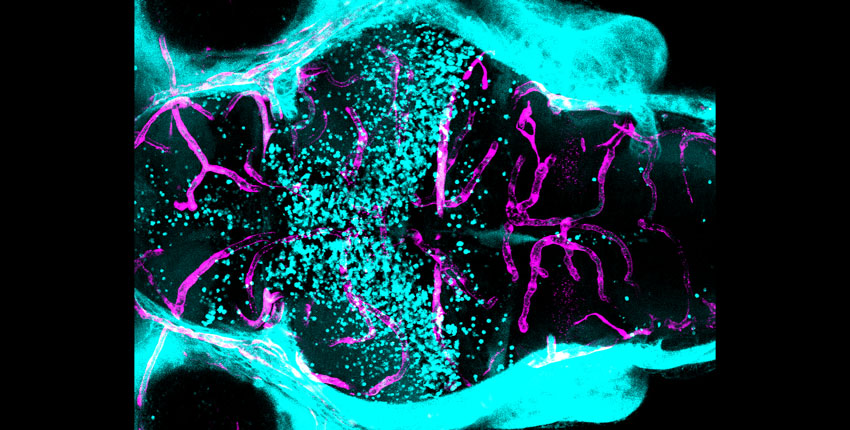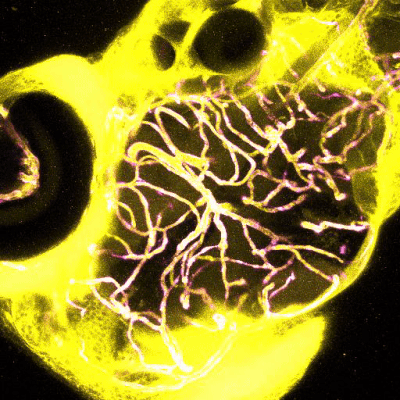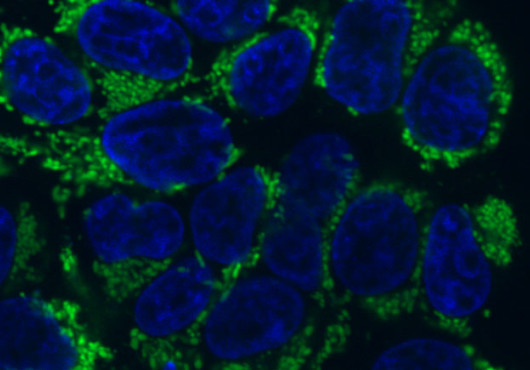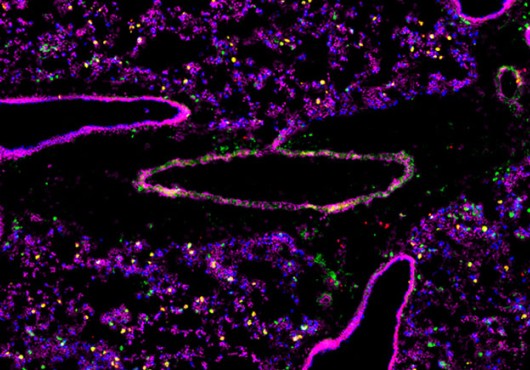
When researchers injected fluorescent dye (blue) into the circulatory system of a zebrafish with a spock1 mutation, the dye leaked out of blood vessels (pink) in the forebrain and midbrain (left), but stayed relatively confined within the hindbrain (right), revealing a blood-brain barrier that was permeable in some areas but not others. Image: Natasha O’Brown
At a glance:
- Working with mice and zebrafish, researchers identify a gene, expressed in neurons, that produces a signal needed for development and maintenance of the blood-brain barrier.
- When mutated, the gene makes certain regions of the blood-brain barrier more permeable.
- The findings could help scientists control the blood-brain barrier — important for delivering drugs into the central nervous system or countering damage from neurodegenerative disease.
What makes the vital layer of protective cells around the brain and spinal cord — the blood-brain barrier — more or less permeable has been one of the more mystifying questions in neuroscience.
Understanding how the barrier works to allow in or keep out certain substances has critical implications for everything from disease progression to drug delivery.
Now, a new Harvard Medical School study, published July 11 in Developmental Cell, has brought scientists a step closer to figuring it out.
Working in zebrafish and mice, the team discovered that a signal originating from a gene in neurons is essential for the proper formation of the blood-brain barrier during embryonic development and helps ensure that the barrier remains intact throughout adulthood.
If replicated in further animal testing and eventually in humans, the findings could help scientists control the permeability of the blood-brain barrier. In doing so, researchers may be able to develop more effective ways of delivering cancer or psychiatric medicines into the brain and better strategies for combating barrier damage caused by neurodegeneration or stroke.
Following the science
The blood-brain barrier is made of tightly interlaced cells — endothelial cells, pericytes, and astrocytes — lining the blood vessels of the brain and spinal cord that make up the central nervous system. Together, these cells form a layered, semipermeable membrane that selectively lets in nutrients and small molecules, while keeping out harmful substances.
“In normal, day-to-day life, you need a blood-brain barrier to help protect you from invading toxins and pathogens in the blood,” explained lead author Natasha O’Brown, a research fellow in systems biology at HMS who is starting her lab at Rutgers University in September.
Science. Medicine. Humanity.
Harvard Medicine magazine delivered to your inbox






